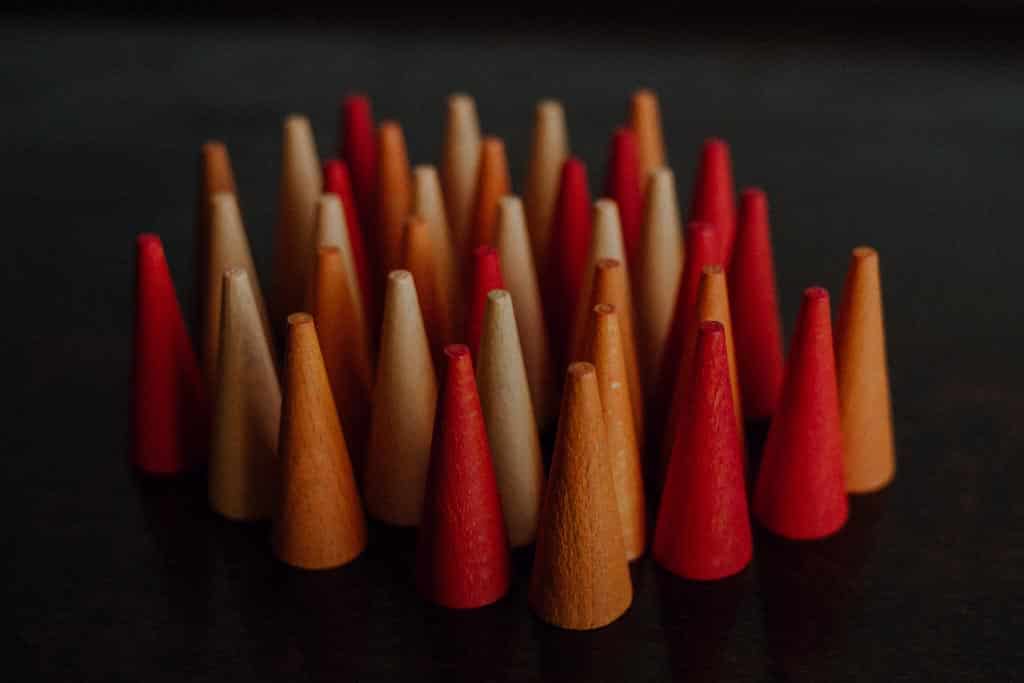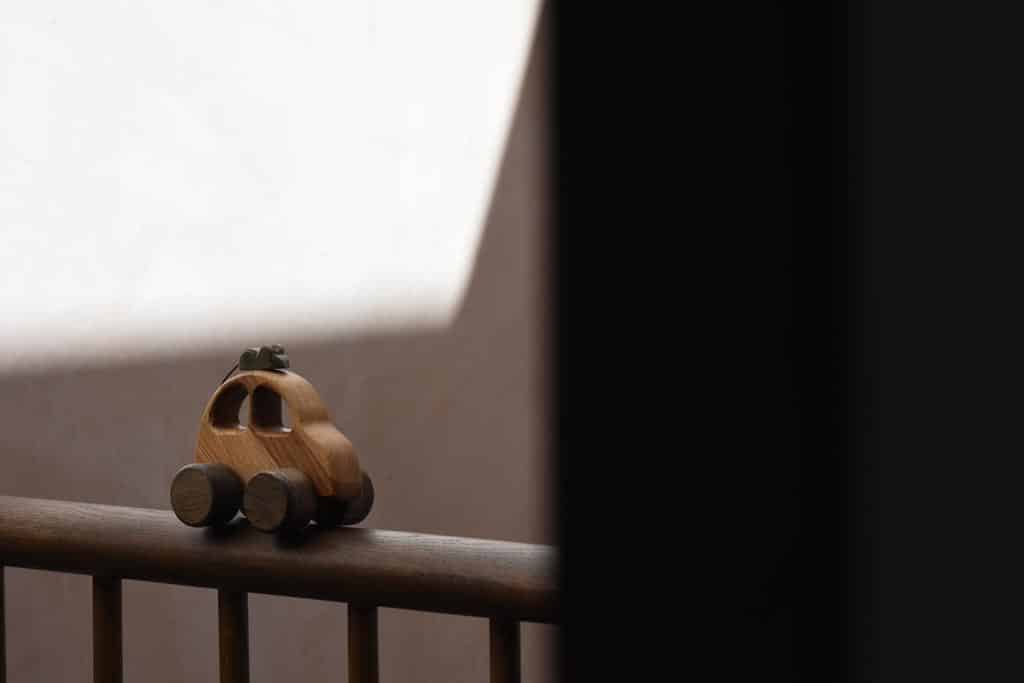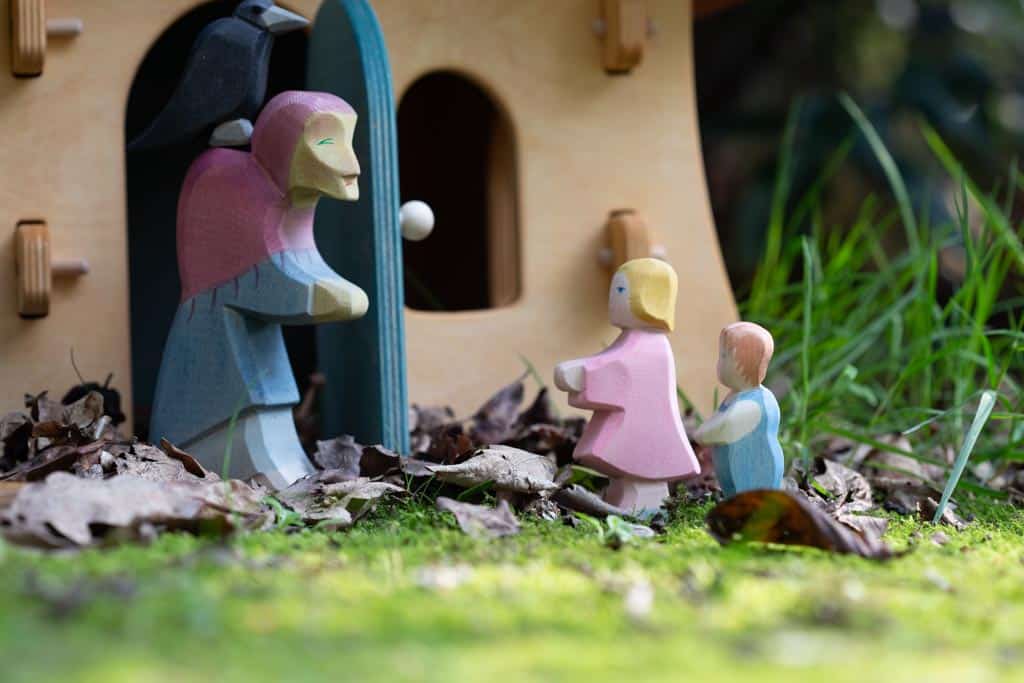Loose parts don’t look very inspiring.
What can you do with a box-full of identical pieces?
But sit with them a while and you’ll understand what makes them so fascinating. Even as adults we gain pleasure from these materials. There’s something soothing and almost meditative about arranging the pieces in a visually harmonious way. Some arrangements simply feel right.
Contents:
- What is loose part play?
- Why does it matter?
- How to play with loose parts
- Best toys for loose-part play
What is loose part play?
If your child goes to nursery or pre-school there’s a good chance there’ll be a selection of loose parts for them to play with. Logs, pebbles, cotton reels, boxes and balls are all loose parts.
The theory goes that loose parts are a gateway to creativity and problem-solving for small children. Having loose parts available lets them choose and use the materials as they want to and allows them to experiment without a pre-determined outcome or a ‘right’ way to do things.
Consider, for example, a jar full of beads. How many ways can you think of to play with them?
- Threading, of course.
- Poured out, and discovering that small objects, when grouped together, ‘flow’ like water.
- Grouped by colour, and sorted into different containers
- Lined up
- Rolled down a tube
- Stuck into play dough to make the nobbly skin of an ankylosaurus
- Arranged in a spiral pattern
- Bounced down the stairs
- Floated in water
The possibilities really are endless. Can you think of a toy that offers so much variety? I can’t.

Put simply, children who play with loose parts are using creativity, imagination, science and discovery, firing on all cylinders in their play.
Why does it matter?
“In any environment, both the degree of inventiveness and creativity, and the possibility of discovery, are directly proportional to the number and kind of variables in it.”
Simon Nicholson, The Theory of Loose Parts
Architect Simon Nicholson first coined the phrase loose-part play to describe the endless possibilities offered by interesting locations. A sleek, modern, empty space has no loose parts and therefore few opportunities for discovery.
A forest, on the other hand is full of interesting and, more importantly, movable objects: pine cones, leaves, sticks, stones and minibeasts. Simply handling loose parts inspires new play. New ideas present themselves. Loose part play is exploratory.

There’s no instruction manual for loose parts, which is of course a big part of their appeal. Children can use them as a standalone toy, stacking cotton reels to make a tower or lining up dominoes to knock down, for example. They can use them to count, sort (in groups of colour, size, shape, age etc), make patterns on paper or the floor, build and construct. They are also very useful when mixed up with other toys. A selection of pebbles from the beach can be used as moon rocks in an intergalactic small world, a bunch of sticks can become a caveman’s fire. There really is no end to what loose parts can become.
Loose parts are a gateway to creativity and problem-solving for small children. Making loose parts available lets them choose and use the materials as they want to, and allows them to experiment without a pre-determined outcome or a ‘right’ way to do things.
Loose parts for sorting
No sooner do you have two sets of loose parts than your child’s instinct is to begin to sort them. Into groups, into bowls, it doesn’t matter. The urge to look for similarities is strong. So much of learning is simply pattern recognition. Sorting activities are powerful drivers of higher order thinking and are something we recommend highly here at 100 Toys. We’ve written a guide to sorting if you’d like to find out more.

Loose parts don’t come with instructions. If this kind of play is new to you, start with a basket of natural materials and see how they can be integrated with your existing toy collection. Using cones as trees is an great place to start.
How to play with loose parts

Mix up the sizes and shapes or your loose part collections, from tiny sequins to big balloons. The more diverse and interesting the collections, the more opportunities there are for experimentation and discovery.
Try not to tidy up loose parts while children are playing with them. There will inevitably be some mess – it’s part of the fun!

Not all loose parts are natural. A tub of nuts and bolts from your toolbox can send play off in a new direction, and toys such as Grapat’s mandalas and coins offer a colourful entry-point to this kind of play.
If your child is using their loose parts in a repetitive way, that’s OK. Take a look at our guide to understanding schema play in toddlers (especially the positioning schema) for a window into this fascinating world of discovery and to learn more about how to encourage it.

Grapat loose parts can be combined to create wonderful small-world scenes. Add Grapat mushrooms, flowers and flames for even more variety.
Whether you choose to use natural materials, ready-made objects, or a combination of the two, give loose-part play a try. It’s the way children naturally play, and it’s good for them, too.

Best toys for loose-part play
We love Grapat’s loose parts for their beauty and colour. They’re not strictly necessary, of course. By now you’ve realised that any generic materials will do. The benefit to choosing a toy is that you can be sure of its safety and provenance. We can see that a box of screws or wooden dowels might work brilliantly, but we’re not sure they’re safe to chew on. The same is true of natural materials: wonderful to work with, under supervision, but the clean-up job afterwards means you might want to avoid using them for independent play.




